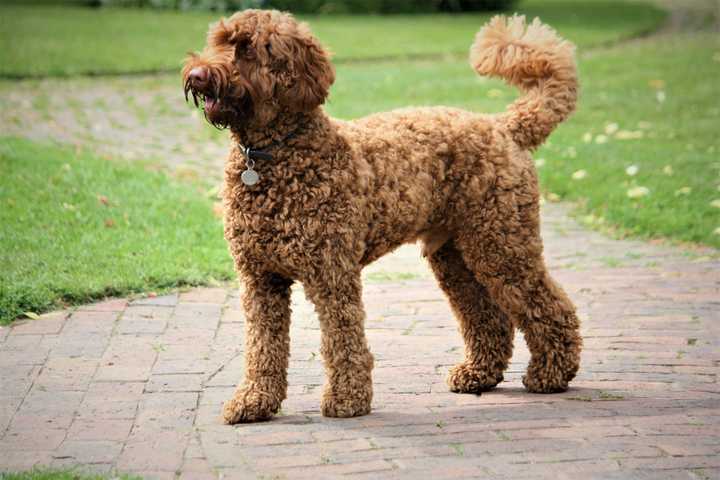
Here are some of the top-searched questions by dog owners, answered, conveniently all in one place.
1. How do I potty train my puppy?
Potty training a puppy can be a challenge, but with patience and consistency, it can be done. Start by creating a consistent routine for taking your puppy outside to go potty. Make sure to take them out first thing in the morning, after every meal, and before bedtime. Praise and reward your puppy when they successfully go potty outside. If accidents do happen inside, clean them up thoroughly to remove any odor, as this can attract your puppy back to the same spot. Consider using a crate or confining your puppy to a small area when you're not home to prevent accidents.
2. What is the best dog food for my breed?
The best dog food for your breed will depend on their age, size, and activity level. Consult with your vet to determine the best diet for your dog. In general, it's recommended to feed your dog a high-quality, balanced diet that includes protein, carbohydrates, and healthy fats. Avoid feeding your dog table scraps, as this can upset their digestive system and lead to obesity.
3. How often should I take my dog to the vet?
Most dogs should visit the vet at least once a year for a check-up and vaccinations. Puppies, senior dogs, and dogs with health issues may need more frequent visits. It's also important to take your dog to the vet if you notice any changes in their behavior or health. Your vet can provide you with a personalized schedule for visits based on your dog's individual needs.
4. How do I stop my dog from barking excessively?
Excessive barking can be a problem for dog owners, but there are steps you can take to address it. Firstly, determine the cause of the barking. Is your dog barking out of boredom, fear, or because they're trying to get your attention? Once you've identified the cause, you can work on a solution. Providing your dog with plenty of physical and mental stimulation, such as toys, exercise, and training, can help reduce boredom-related barking. If your dog is barking out of fear, consider working with a professional dog trainer or behaviorist to help them overcome their fear.
5. What is the average lifespan of my dog breed?
The average lifespan of a dog breed can vary, but it's typically between 10 to 13 years. Smaller breeds tend to live longer, while larger breeds have a shorter lifespan. Factors such as genetics, diet, exercise, and overall health can also impact a dog's lifespan.
6. How can I tell if my dog is in pain?
Dogs can't communicate in the same way that humans can, so it's important to be aware of signs that may indicate pain. Some common signs of pain in dogs include: changes in behavior, such as increased aggression or lethargy; changes in activity level, such as reduced activity or difficulty moving; changes in eating habits, such as a decreased appetite; and changes in sleep patterns, such as restlessness or trouble sleeping. If you suspect that your dog is in pain, it's important to consult with your vet.
7. What are some good toys for my dog?
The best toys for your dog will depend on their individual personality and preferences. Some dogs love to chew, while others prefer to fetch or play tug-of-war. Some good toy options for dogs include:
- Chew toys: bones, antlers, and tough rubber toys are great for dogs who love to chew.
- Fetch toys: balls, frisbees, and flying disks are great for dogs who love to play fetch.
- Puzzle toys: interactive toys that require your dog to use their problem-solving skills, such as treat-dispensing toys and activity boards, can provide mental stimulation for your dog.
- Tug toys: ropes and tug toys are great for playing tug-of-war with your dog.
Remember to always supervise your dog while they play and replace any toys that become damaged to prevent choking hazards.
8. How much exercise does my dog need each day?
The amount of exercise your dog needs will depend on their breed, age, and overall health. In general, most dogs need at least 30 minutes of exercise each day, but some breeds may need more. Exercise can include activities such as walks, runs, and playtime with toys. Providing your dog with daily exercise can help them maintain a healthy weight, reduce stress, and improve their overall well-being.
9. What are the best commands to teach my dog?
The best commands to teach your dog will depend on your individual needs and goals, but some basic commands that are good for all dogs to know include:
- Sit
- Stay
- Come
- Heel
- Leave it
- Drop it
Training your dog should be a positive and enjoyable experience for both you and your dog. Consider working with a professional dog trainer if you need help with training.
10. How do I groom my dog at home?
Grooming your dog at home can be a bonding experience and help you keep your dog looking and feeling their best. Basic grooming tasks include brushing your dog's fur, trimming their nails, cleaning their ears, and brushing their teeth. It's important to use the right tools and techniques for your dog's breed and fur type. For example, long-haired dogs (like doodle mixes) may require more frequent brushing to prevent mats and tangles. Consider talking to your vet or a professional groomer for advice on the best grooming techniques for your dog. Check out our supplies link for our favorites.


